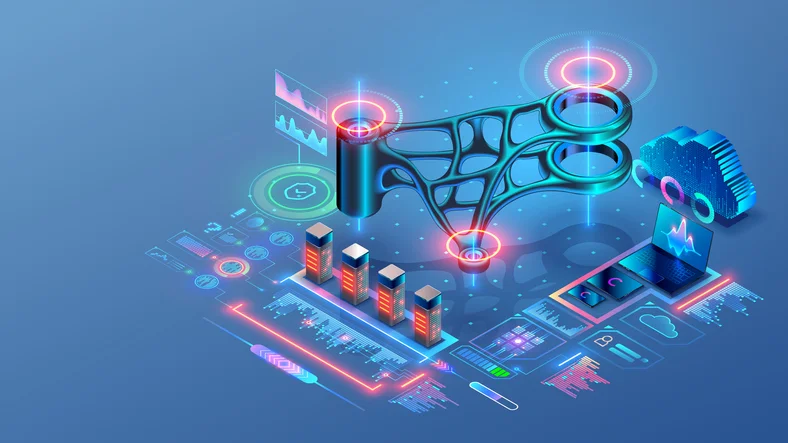- BY nwmcadmin
- POSTED IN 3D Printing, American Manufacturing, Product Development
- WITH 0 COMMENTS
- PERMALINK
- STANDARD POST TYPE

In recent years, Artificial Intelligence (AI) has become a transformative force in various industries, including manufacturing. With the advent of AI design capabilities, like AI 3D printing, the question arises: can AI-generated designs be effectively used in injection molding? As the technology evolves, it’s clear that AI is making significant strides in the field of injection molding, from optimizing processes to ensuring superior product quality.
How has AI affected injection molding?
AI has brought a paradigm shift to injection molding by introducing automation, precision, and efficiency. Injection molding, which involves injecting molten plastic into a mold to create various parts, is now benefiting from AI’s ability to analyze vast amounts of data in real time. This data-driven approach is enhancing every aspect of the process, from design to production.
3 Ways That AI Designs Are Used in Injection Molding
AI designs are reshaping the way manufacturers approach injection molding. Here are some key areas where AI is making a difference
-
Process Optimization
AI algorithms analyze data from the injection molding process to identify inefficiencies and suggest improvements. By fine-tuning variables such as temperature, pressure, and cycle times, AI can optimize the entire process, leading to faster production cycles and reduced waste. This level of optimization was previously unattainable with traditional methods.
-
Quality Control
One of the most critical aspects of injection molding is ensuring consistent product quality. AI plays a crucial role in this by continuously monitoring the process and detecting any deviations that could lead to defects. By making real-time adjustments, AI ensures that each part meets the desired specifications, reducing the likelihood of errors and increasing overall quality.
-
Machine Learning
Machine learning, a subset of AI, is particularly impactful in injection molding. By analyzing historical data, machine learning algorithms can predict potential issues before they occur. This proactive approach allows manufacturers to schedule maintenance and prevent costly downtime. Additionally, machine learning helps machines adapt to new production processes, improving efficiency and reducing setup times.
Benefits of AI in Injection Molding
The integration of AI in injection molding offers numerous benefits, including:
- Increased Efficiency: AI-driven process optimization reduces cycle times and minimizes waste, leading to cost savings and faster production.
- Enhanced Quality: AI’s ability to monitor and adjust the molding process in real time ensures that each part meets stringent quality standards.
- Predictive Maintenance: AI can predict when maintenance is needed, preventing unexpected breakdowns and extending the lifespan of machinery.
- Design Innovation: AI-generated designs can push the boundaries of what’s possible in injection molding, allowing for more complex and innovative products.
Limitations of AI Designs
While AI designs offer many advantages, there are limitations to consider. AI-generated designs may not always account for the nuances of injection molding, such as material properties or specific manufacturing constraints. Additionally, AI 3D designs often require human oversight to ensure they meet all necessary criteria for production. As AI technology continues to evolve, these limitations are expected to diminish, but for now, a collaborative approach between AI and human expertise is essential.
Need help with a design? Call our experts
As AI continues to revolutionize the injection molding industry, it’s important to stay ahead of the curve. If you’re exploring the possibilities of AI designs or need assistance with an existing project, our team of experts is here to help. Contact us today to learn how we can bring your ideas to life with cutting-edge technology and unparalleled expertise.


